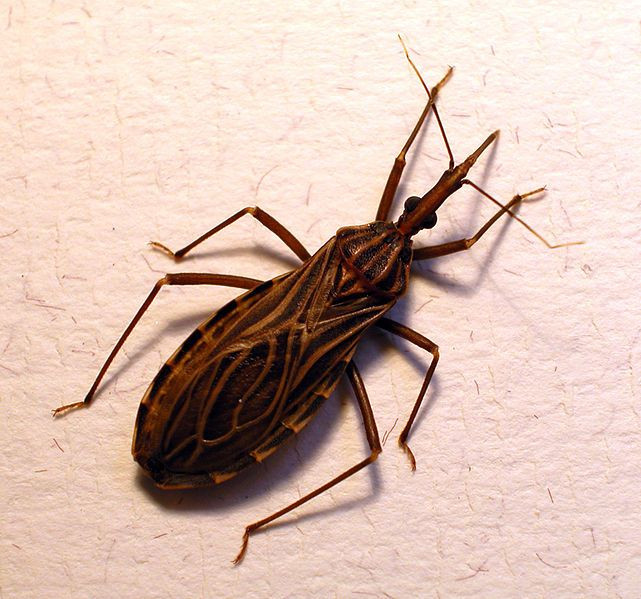Think Ebola Is Bad? Chagas, The 'Kissing Bug' Disease, Is Much Worse And Often Symptomless

The world is reeling over the Ebola outbreak, but many of us are overlooking other viruses and diseases that are far more threatening.
There’s malaria, for example, which killed half a million people in 2012 and continues to sicken people in West Africa, even though fewer doctors are available to treat them due to the urgency of Ebola. HIV/AIDS continues to be a huge problem across the globe. But there’s also the “kissing bug” disease, or Chagas, which isn’t very well-known. It’s a silent killer, often lurking in people’s bloodstreams for up to two decades before causing their organs to fail.
So a research team from Baylor College of Medicine in Houston chose to find more information about this relatively elusive disease, ultimately presenting their results at the American Society of Tropical Medicine and Hygiene in New Orleans. The researchers examined 17 Houston-area residents who had been infected with the disease, tracking the progression of the disease, and also analyzed blood donors between 2008 and 2012. They found that one in every 6,500 blood donors tested positive for parasite exposure.
“We were astonished to not only find such a high rate of individuals testing positive for Chagas in their blood, but also high rates of heart disease that appear to be Chagas-related,” Melissa Nolan Garcia, epidemiologist and an author of the study, said in a statement.
Chagas disease, also known as American trypanosomiasis, affects up to seven to eight million people worldwide. The parasite Trypanosoma cruzi is carried around by insects primarily in the Americas, infecting humans and other animals by biting or “kissing” their skin. According to the World Health Organization (WHO), up to 30 percent of people who are infected and live with the parasite for a long time develop cardiac problems. Ten percent of infected people, meanwhile, develop digestive or neurological issues. If it’s caught early enough, however, the disease is curable.
Regardless, the WHO’s description of how the disease is transmitted is somewhat terrifying:
In Latin America, T. cruzi parasites are mainly transmitted by contact with the feces of infected blood-sucking triatomine bugs. These bugs, vectors that carry the parasites, typically live in the cracks of poorly-constructed homes in rural or suburban areas. Normally they hide during the day and become active at night when they feed on human blood. They usually bite an exposed area of skin such as the face, and the bug defecates close to the bite. The parasites enter the body when the person instinctively smears the bug feces into the bite, the eyes, the mouth, or into any skin break.
In 2012, scientists called Chagas disease “the New HIV/AIDS of the Americas,” noting that it was one of many neglected tropical diseases (NTDs) that afflict “the estimated 99 million people who live on less than $2 per day in the Latin American and Caribbean region.” While Chagas disease has previously mostly been found in rural and tropical regions in Latin and South America, the scientists pointed out that more cases have been appearing throughout the U.S. and Europe.

As somewhat of a follow-up to that study, Garcia and her team argued in their new study that there is “an enormous treatment gap” because not many physicians in Texas — or anywhere in the U.S. for that matter — are aware of the parasite, or the fact that it’s not just limited to poor, rural areas in South America. “We are concerned that individuals who test positive are not seeking medical care or being evaluated for treatment,” Garcia said. “And even if they do seek medical care, we heard from some patients that their primary care doctors assumed the positive test represented a ‘false positive’ due to low physician awareness of local transmission risk.”
In short, the authors argue that Chagas disease shouldn’t be dismissed as something that’s not serious. But until more research is done — which will involve taking many blood samples as the only way to test for the parasite — nothing can be certain. "So little surveillance has been done that we don't know the true disease burden here in the United States," Kristy Murray, an associate professor of tropical medicine at Baylor and an author of the study, said in the press release. "The next step is to study populations considered high risk. There is still a lot to be learned in terms of who is contracting the disease within the United States."
Published by Medicaldaily.com



























